#and as for temperature…
Explore tagged Tumblr posts
Text


i'm sure there's a canon timeline but dao is a springtime game to me
#ailill mahariel#leliana#alistair theirin#zevran arainai#morrigan#dragon age#dao#my art#my ocs#probably entirely bc i first played it for the first time in late february/early march but the association is indelible now#there's a certain combination of like weather and temperature that makes me think abt tramping around fereldan trying to stop the blight#this was also supposed to be a springtime post but. well.#i think i posted a wip of this like five months ago lmao 🤦
11K notes
·
View notes
Text




snuggling in the sun...
#ethan winters#mia winters#rosemary winters#rose winters#resident evil#resident evil fanart#rebhfun#resident evil village#resident evil 8#re8#mithan#i think mithan would nap alot#like they dont have work#they just have a baby and r isolated in some house in romaina#they take lots of cat naps together...#i hc ethan to have a very low body temperature...#cos hes like#dead#LOOL#mia and her moldy husband who like napping by windows
8K notes
·
View notes
Text

Maiden of Light
#artists on tumblr#i'm so ready to be over winter#spring and warm weather can't come soon enough#my mood is directly linked to the temperature#so i'm trying to cope by channeling my nordic roots#lucia maiden is a cool bit of culture that i always liked as a kid#the whole school would be standing along the long hallway#in the dark#holding candles#while the one chosen as lucia would walk through it with a wreath and candles on her head and we all sing the Sankta Lucia song#i'm not religious but#the VIBES#were immaculate
14K notes
·
View notes
Text

In my new scale, °X, 0 is Earths' record lowest surface temperature, 50 is the global average, and 100 is the record highest, with a linear scale between each point and adjustment every year as needed.
Temperature Scales [Explained]
Transcript Under the Cut
Temperature Scales
[A table with five columns, labelled: Unit, water freezing point, water boiling point, notes, cursedness. There are eleven rows below the labels.]
[Row 1:] Celsius, 0, 100, Used in most of the world, 2/10 [Row 2:] Kelvin, 273.15, 373.15, 0K is absolute zero, 2/10 [Row 3:] Fahrenheit, 32, 212, Outdoors in most places is between 0–100, 3/10 [Row 4:] Réaumur, 0, 80, Like Celsius, but with 80 instead of 100, 3/8 [Row 5:] Rømer, 7.5, 60, Fahrenheit precursor with similarly random design, 4/10, [Row 6:] Rankine, 491.7, 671.7, Fahrenheit, but with 0°F set to absolute zero, 6/10 [Row 7:] Newton, 0, 33-ish, Poorly defined, with reference points like "the hottest water you can hold your hand in", 7-ish/10 [Row 8:] Wedgewood, –8, –6.7, Intended for comparing the melting points of metals, all of which it was very wrong about, 9/10 [Row 9:] Galen, –4?, 4??, Runs from –4 (cold) to 4 (hot). 0 is "normal"(?), 4/–4 [Row 10:] ''Real'' Celsius, 100, 0, In Anders Celsius's original specification, bigger numbers are ''colder''; others later flipped it, 10/0 [Row 11:] Dalton, 0, 100, A nonlinear scale; 0°C and 100°C are 0 and 100 Dalton, but 50°C is 53.9 Dalton, 53.9/50
4K notes
·
View notes
Text
"summer is the worst" "no winter is!!!" actually both are. down with Big Temperature. spring and autumn for the win
#one thing about me is i hate an extreme temperature#high heat makes me feel physically ill and low cold hurts my body#it should be 55-75 fahrenheit year round
59K notes
·
View notes
Text
"A century of gradual reforestation across the American East and Southeast has kept the region cooler than it otherwise would have become, a new study shows.
The pioneering study of progress shows how the last 25 years of accelerated reforestation around the world might significantly pay off in the second half of the 21st century.
Using a variety of calculative methods and estimations based on satellite and temperature data from weather stations, the authors determined that forests in the eastern United States cool the land surface by 1.8 – 3.6°F annually compared to nearby grasslands and croplands, with the strongest effect seen in summer, when cooling amounts to 3.6 – 9°F.
The younger the forest, the more this cooling effect was detected, with forest trees between 20 and 40 years old offering the coolest temperatures underneath.
“The reforestation has been remarkable and we have shown this has translated into the surrounding air temperature,” Mallory Barnes, an environmental scientist at Indiana University who led the research, told The Guardian.
“Moving forward, we need to think about tree planting not just as a way to absorb carbon dioxide but also the cooling effects in adapting for climate change, to help cities be resilient against these very hot temperatures.”
The cooling of the land surface affected the air near ground level as well, with a stepwise reduction in heat linked to reductions in near-surface air temps.
“Analyses of historical land cover and air temperature trends showed that the cooling benefits of reforestation extend across the landscape,” the authors write. “Locations surrounded by reforestation were up to 1.8°F cooler than neighboring locations that did not undergo land cover change, and areas dominated by regrowing forests were associated with cooling temperature trends in much of the Eastern United States.”
By the 1930s, forest cover loss in the eastern states like the Carolinas and Mississippi had stopped, as the descendants of European settlers moved in greater and greater numbers into cities and marginal agricultural land was abandoned.
The Civilian Conservation Corps undertook large replanting efforts of forests that had been cleared, and this is believed to be what is causing the lower average temperatures observed in the study data.
However, the authors note that other causes, like more sophisticated crop irrigation and increases in airborne pollutants that block incoming sunlight, may have also contributed to the lowering of temperatures over time. They also note that tree planting might not always produce this effect, such as in the boreal zone where increases in trees are linked with increases in humidity that way raise average temperatures."
-via Good News Network, February 20, 2024
#trees#forests#reforestation#tree planting#global warming#climate change#climate crisis#american south#the south#eastern us#southern usa#conservation#meteorology#global temperature#conservation news#climate news#environment#hope#good news#hope posting#climate action#climate science#climate catastrophe#climate hope
14K notes
·
View notes
Text


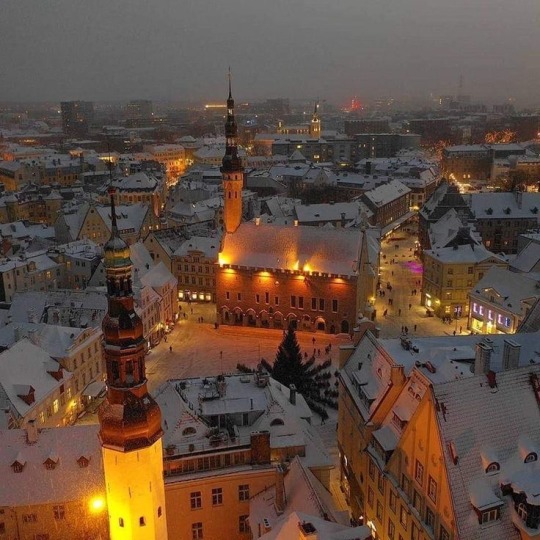

𝖼𝗈𝗓𝗒 𝗐𝗂𝗇𝗍𝖾𝗋 𝗂𝗇 𝗍𝗁𝖾 𝖼𝗂𝗍𝗒
𝗑 - 𝗑 / 𝗑 - 𝗑
#warm and cold at the same time#temperature tease is what it is#lol#I love it#cottagecore#nature#naturecore#snow#snowcore#winter#winter aesthetic#city aesthetic#photography#cosycore#cozycore
12K notes
·
View notes
Text
16K notes
·
View notes
Text
People who have regular body heat don't experience cold the way we do. They apparently have this little heater inside of them that just, keeps their blood and internal organs comfy all the time. Being "cold" to them is just a chill on their skin. "If you're still cold after the first layer, put another layer on!" That doesn't work if you don't have the body heat to warm up those layers!!! it's just cold fabric on top of cold fabric on top of cold fabric on top of cold skin on top of cold fat on top of cold muscle on top of cold bones.
Then of course, even if there are FINALLY enough layers to make our skin warm. That does not mean it will make our bones warm. I could have an electronically heated blanket on me, and start sweating from it, and STILL BE COLD because it takes a lot of time for any amount of heat to pierce the surface level of my body & warm me in any ways that matter. So yeah, anytime you're interacting with somebody who doesn't have temperature regulation issues, and they offhandedly mention that they love the cold, just be aware they are never ever talking about our kind of cold. the kind that feels like an uphill battle. They're talking about something completely different and unique to them and their little internal heater. something some of us may never experience because we're always trapped in that fight with the air around us.
#chronic illness#chronically ill#chronic fatigue#temperature regulation#temperature#cold#invisible disability#invisible illness#disabled#disabilities#disability#cripple punk#crip punk#angry cripple#fuck ableists#actually disabled#chronic disability#cripplepunk
2K notes
·
View notes
Text
A Tour of Cosmic Temperatures
We often think of space as “cold,” but its temperature can vary enormously depending on where you visit. If the difference between summer and winter on Earth feels extreme, imagine the range of temperatures between the coldest and hottest places in the universe — it’s trillions of degrees! So let’s take a tour of cosmic temperatures … from the coldest spots to the hottest temperatures yet achieved.
First, a little vocabulary: Astronomers use the Kelvin temperature scale, which is represented by the symbol K. Going up by 1 K is the same as going up 1°C, but the scale begins at 0 K, or -273°C, which is also called absolute zero. This is the temperature where the atoms in stuff stop moving. We’ll measure our temperatures in this tour in kelvins, but also convert them to make them more familiar!
We’ll start on the chilly end of the scale with our CAL (Cold Atom Lab) on the International Space Station, which can chill atoms to within one ten billionth of a degree above 0 K, just a fraction above absolute zero.

Credit: NASA's Goddard Space Flight Center/Scott Wiessinger
Just slightly warmer is the Resolve sensor inside XRISM, pronounced “crism,” short for the X-ray Imaging and Spectroscopy Mission. This is an international collaboration led by JAXA (Japan Aerospace Exploration Agency) with NASA and ESA (European Space Agency). Resolve operates at one twentieth of a degree above 0 K. Why? To measure the heat from individual X-rays striking its 36 pixels!

Credit: NASA's Goddard Space Flight Center/Scott Wiessinger
Resolve and CAL are both colder than the Boomerang Nebula, the coldest known region in the cosmos at just 1 K! This cloud of dust and gas left over from a Sun-like star is about 5,000 light-years from Earth. Scientists are studying why it’s colder than the natural background temperature of deep space.
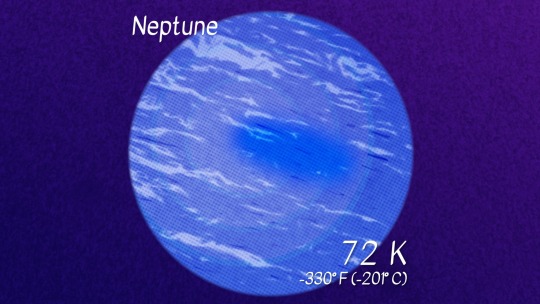
Credit: NASA's Goddard Space Flight Center/Scott Wiessinger
Let’s talk about some temperatures closer to home. Icy gas giant Neptune is the coldest major planet. It has an average temperature of 72 K at the height in its atmosphere where the pressure is equivalent to sea level on Earth. Explore how that compares to other objects in our solar system!

Credit: NASA's Goddard Space Flight Center/Scott Wiessinger
How about Earth? According to NOAA, Death Valley set the world’s surface air temperature record on July 10, 1913. This record of 330 K has yet to be broken — but recent heat waves have come close. (If you’re curious about the coldest temperature measured on Earth, that’d be 183.95 K (-128.6°F or -89.2°C) at Vostok Station, Antarctica, on July 21, 1983.)
We monitor Earth's global average temperature to understand how our planet is changing due to human activities. Last year, 2023, was the warmest year on our record, which stretches back to 1880.
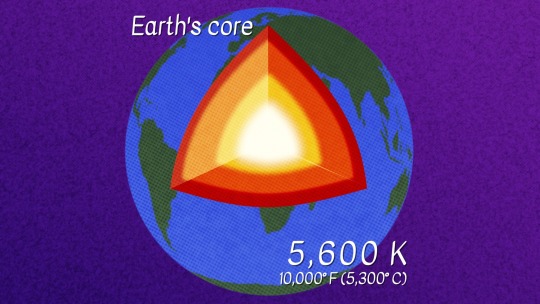
Credit: NASA's Goddard Space Flight Center/Scott Wiessinger
The inside of our planet is even hotter. Earth’s inner core is a solid sphere made of iron and nickel that’s about 759 miles (1,221 kilometers) in radius. It reaches temperatures up to 5,600 K.

Credit: NASA's Goddard Space Flight Center/Scott Wiessinger
We might assume stars would be much hotter than our planet, but the surface of Rigel is only about twice the temperature of Earth’s core at 11,000 K. Rigel is a young, blue star in the constellation Orion, and one of the brightest stars in our night sky.
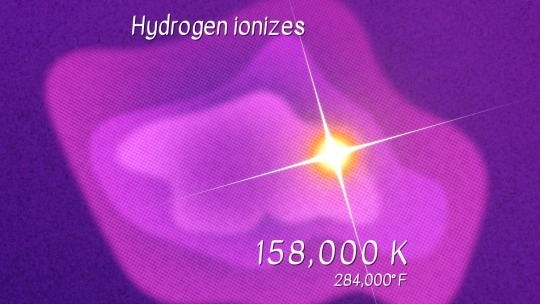
Credit: NASA's Goddard Space Flight Center/Scott Wiessinger
We study temperatures on large and small scales. The electrons in hydrogen, the most abundant element in the universe, can be stripped away from their atoms in a process called ionization at a temperature around 158,000 K. When these electrons join back up with ionized atoms, light is produced. Ionization is what makes some clouds of gas and dust, like the Orion Nebula, glow.

Credit: NASA's Goddard Space Flight Center/Scott Wiessinger
We already talked about the temperature on a star’s surface, but the material surrounding a star gets much, much hotter! Our Sun’s surface is about 5,800 K (10,000°F or 5,500°C), but the outermost layer of the solar atmosphere, called the corona, can reach millions of kelvins.
Our Parker Solar Probe became the first spacecraft to fly through the corona in 2021, helping us answer questions like why it is so much hotter than the Sun's surface. This is one of the mysteries of the Sun that solar scientists have been trying to figure out for years.
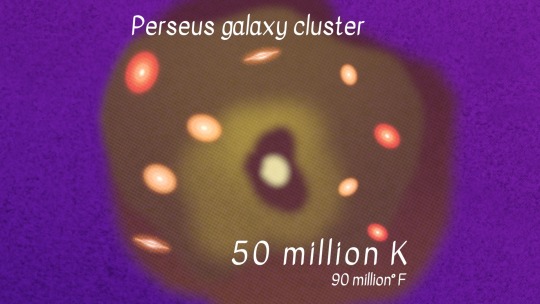
Credit: NASA's Goddard Space Flight Center/Scott Wiessinger
Looking for a hotter spot? Located about 240 million light-years away, the Perseus galaxy cluster contains thousands of galaxies. It’s surrounded by a vast cloud of gas heated up to tens of millions of kelvins that glows in X-ray light. Our telescopes found a giant wave rolling through this cluster’s hot gas, likely due to a smaller cluster grazing it billions of years ago.

Credit: NASA's Goddard Space Flight Center/Scott Wiessinger
Now things are really starting to heat up! When massive stars — ones with eight times the mass of our Sun or more — run out of fuel, they put on a show. On their way to becoming black holes or neutron stars, these stars will shed their outer layers in a supernova explosion. These layers can reach temperatures of 300 million K!

Credit: NASA's Goddard Space Flight Center/Jeremy Schnittman
We couldn’t explore cosmic temperatures without talking about black holes. When stuff gets too close to a black hole, it can become part of a hot, orbiting debris disk with a conical corona swirling above it. As the material churns, it heats up and emits light, making it glow. This hot environment, which can reach temperatures of a billion kelvins, helps us find and study black holes even though they don’t emit light themselves.
JAXA’s XRISM telescope, which we mentioned at the start of our tour, uses its supercool Resolve detector to explore the scorching conditions around these intriguing, extreme objects.

Credit: NASA's Goddard Space Flight Center/CI Lab
Our universe’s origins are even hotter. Just one second after the big bang, our tiny, baby universe consisted of an extremely hot — around 10 billion K — “soup” of light and particles. It had to cool for a few minutes before the first elements could form. The oldest light we can see, the cosmic microwave background, is from about 380,000 years after the big bang, and shows us the heat left over from these earlier moments.

Credit: NASA's Goddard Space Flight Center/Scott Wiessinger
We’ve ventured far in distance and time … but the final spot on our temperature adventure is back on Earth! Scientists use the Large Hadron Collider at CERN to smash teensy particles together at superspeeds to simulate the conditions of the early universe. In 2012, they generated a plasma that was over 5 trillion K, setting a world record for the highest human-made temperature.
Want this tour as a poster? You can download it here in a vertical or horizontal version!
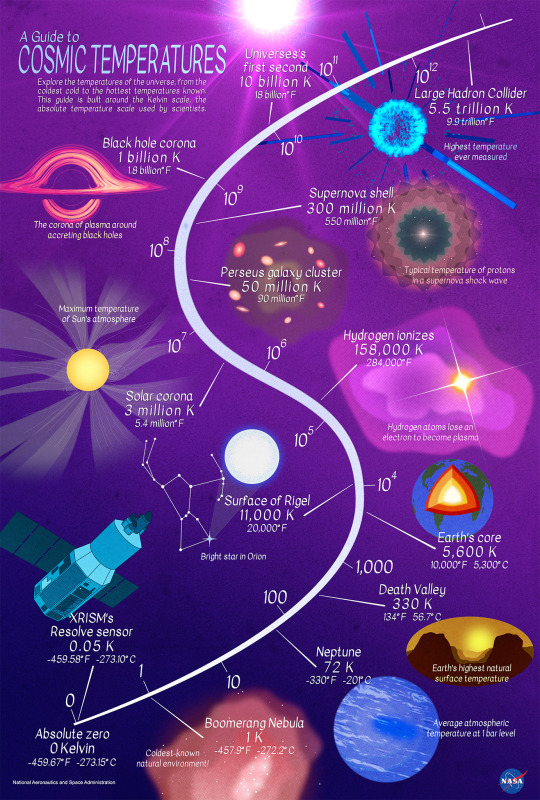
Credit: NASA's Goddard Space Flight Center/Scott Wiessinger
Explore the wonderful and weird cosmos with NASA Universe on X, Facebook, and Instagram. And make sure to follow us on Tumblr for your regular dose of space!
2K notes
·
View notes
Text
Human: *crying, in pain, experiencing minor neurological symptoms* This is delicious, what's in it? Alien: ...our strongest, deadliest poison. Human: How much for a bottle to send home? My mom would absolutely love it. Alien: If you let a team of our finest scientists deliver it and study her reaction, it's free. Human: Sweet, I'm sure she'd be up for that, let me give her a call--
#pedanticblah#humans are weird#humans are space orcs#this post brought to you by my dinner tonight#there were no minor neurological symptoms#unless you count the temperature fuckery spicy food causes#but i had tears streaming down my face#and my only concern was not dripping them into the sauce#(it was garlic sauce for anyone curious)
8K notes
·
View notes
Note
Something I've always been curious about with your amazing Changeling AU, can everyone see the transformations the changeling kids go through in the comics? Or is it like something only those with special eyes/some level of awareness of what the fae and changelings are can pick up on?



#changeling au#my art#its like noticing a temperature#a little drop or kick in temp isn't too noticable#but if you suddenly feel something like hot breath on your face youll stop and go wait what the fuck#and going from cold to sheer sweaty hot is super startling
3K notes
·
View notes
Text



wintersberg i drew during a stream
#ethan winters#karl heisenberg#wintersberg#resident evil#resident evil fanart#rebhfun#resident evil village#resident evil 8#re8#karl is the type of person to over heat and just sleep in only his underwear#cold mold husband and hot metal husband#they can regulate each others temperatures#“haha ur so cold like my soldats”#and ethan beats him with a metal pipe
4K notes
·
View notes
Text
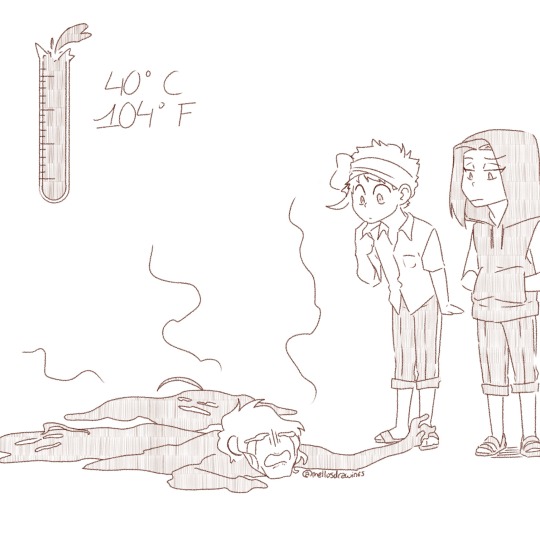

So... heat waves are fun (not)
(Bonus : Mama Jamil)

#i can handle the heat#but my skin is paler than a nun's butt#i can't go out under the sun without spontaneously combusting!#Jamil's rambling is made for laughs but he's actually right#don't go out at peak sunlight hours#if you really need to go out take an umbrella and cover your head!#especially if you have thin hair#always carry a water bottle with you#cooling pads are your friends if you can afford them#washing your hands; feet; and face helps lower your own temperature#dont hesitate to make a foot bath if you're at home#if you have fans you can put a bowl of ice in front of it to blow cold air#when I draw during a heat wave I have a foot bath and a humid towel on my shoulders#that's all for PSA!#mello's drawings#twisted wonderland#twst#azul ashengrotto#jade leech#floyd leech#jamil viper#kalim al asim#art#my art#heat wave
3K notes
·
View notes
Text










Part 18 of Arc II (Part 44)
ah yes, ban, emo cringe fail loser (affectionate)
⇇ | ⇽ | index | ⇾
#rottmnt#rottmnt leonardo#residuum#rottmnt residuum comic#c#g#ban is pronounced like bonbon to be clear. if you didn't get that#if you dont like him i will fill your house with room temperature ham#anyway if you don't like ocs then this comic is not for you lmao#as much as they don't really have THAT much screen time compared to the boys#they're still pretty involved#so#rottmnt oc
1K notes
·
View notes
Text
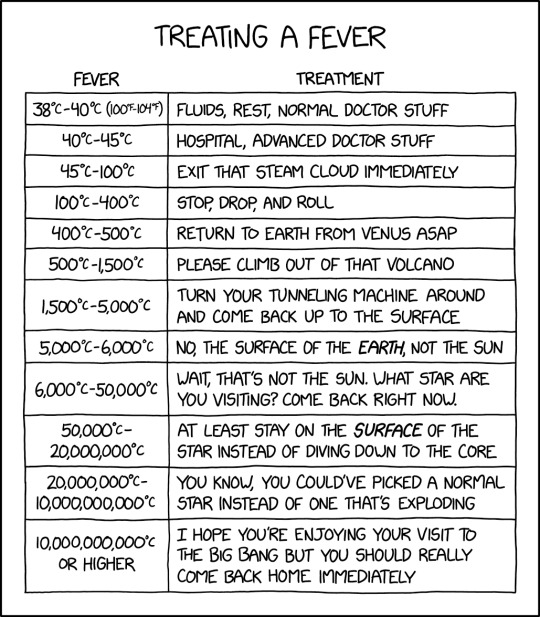
Hypothermia of below 98.6 K should be treated by leaving the giant molecular cloud and moving to the vicinity of a star.
Fever [Explained]
Transcript Under the Cut
Treating a Fever
Fever/Treatment 38°C-40°C (100°F-104°F): Fluids, rest, normal doctor stuff 40°C-45°C: Hospital, advanced doctor stuff 45°C-100°C: Exit that steam cloud immediately 100°C-400°C: Stop, drop, and roll 400°C-500°C: Return to Earth from Venus ASAP 500°C-1,500°C: Please climb out of that volcano 1,500°C-5,000°C: Turn your tunneling machine around and come back up to the surface 5,000°C-6,000°C: No, the surface of the Earth, not the Sun 6,000°C-50,000°C: Wait, that's not the Sun. What star are you visiting? Come back right now. 50,000°C-20,000,000°C: At least stay on the surface of the star instead of diving down to the core 20,000,000°C-10,000,000,000°C: You know, you could've picked a normal star instead of one that's exploding 10,000,000,000°C or higher: I hope you're enjoying your visit to the Big Bang but you should really come back home immediately
4K notes
·
View notes